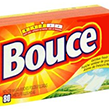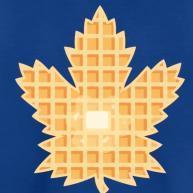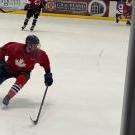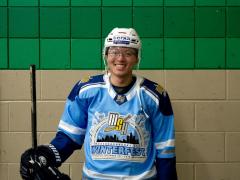Slate
Blackcurrant
Watermelon
Strawberry
Orange
Banana
Apple
Emerald
Chocolate
Marble
Slate
Blackcurrant
Watermelon
Strawberry
Orange
Banana
Apple
Emerald
Chocolate
Marble
Leaderboard
Popular Content
Showing content with the highest reputation on 03/19/18 in all areas
-
4 pointsSo there's a broad spectrum of neurological issues that can affect a player, including what is typically called mental illness, but it depends on what you're asking about. Certain learning disabilities such as dyslexia can make learning things like "right" and "left" difficult, as well as pattern recognition. Autism spectrum disorders and sensory processing disorders can have an effect on how a player interprets external stimuli (instructions, whistles, lights, etc) as stressful or confusing. Many learning disabilities (language based and nonverbal) affect gross and fine motor control. For example I know some people who, because of their particular wiring, have a very hard time with things like swimming because it's difficult for them to coordinate a pattern of movement (treading water, stroke-breathe-stroke, etc) as well as being a sensory-disorienting environment. What are typically called mental or psychiatric illnesses, such as depression, anxiety, or bipolar disorder, are generally considered to have a genetic component that causes a miswiring in the brain, much the same as the above disorders. Sometimes, these are co-morbid, meaning a person with ADHD can have anxiety, or someone with dyslexia can have depression or bipolar disorder. Unfortunately, substance use or misuse is also often co-morbid with mental illness, in part due to lack of access to appropriate support, treatment, and education. First good tactic is get to know your players. Especially young players - let them engage you in conversation, connect with them. Having a good, stable connection to a supportive person does wonders for folks with neurological differences (as it does for most people, but especially important). An added bonus here is that young people with disabilities/mental illness are at significantly higher risk for abuse, and connecting with a trustworthy adult makes them that much less vulnerable. Have clear, consistent expectations. Doesn't mean you have to have the ice-hockey Code of Hammurabi in stone at your rink, but come up with some basic expectations for both you and your players. If you have a formal team format (vs. the free for all of a learn to play), feel free to write them down and distribute them. Things like treating each other with respect (don't call names, no hurting people on purpose, etc), following the rules of the game, being good listeners, are things that apply to player and coach. If you don't follow your own rules, no one will feel like following them either. Consistent, but flexible. Mean what you say - if you say "I will give you two warnings [for behavior] and on the third, you sit on the bench/on the side for [x] minutes", then follow through. Relatedly, change is hard for folks with learning disabilities and mental illness, who may already feel extra stress from trying to navigate neurotypical norms and internal chaos. Come up with a plan - today we will have 5 stations, and we will rotate every 10 minutes (do the math as you like), explain the plan, confirm the plan. When players arrive at a station, be ready, explain, and give appropriate warning when you're going to switch - "in 2 minutes, Coach Bob will blow the whistle, and everyone will go to Coach Jen's station". Having clear plans and expectations is far less anxiety provoking than surprises (tho again, being flexible and asking for input from players is good). In my magical imaginary world, there's about a 3:8-12 coach to player ratio (depending on age and player need - younger players need a higher coach-to-player ratio), so you can have someone who explains verbally, someone who demonstrates, and someone who can physically go through and help players with the exercise. Back to learning your players - in a team format where you can wrangle them in a locker room, go over a practice. What was the best thing? What was the worst thing? Open the lines of communication - maybe they really liked something that you didn't expect, or maybe someone has an idea. Watch them, and pick up on things like who the leaders are, and who the more shy kids are, who the disruptive ones are. Kids with ADHD can be easily overstimulated but when they like something, they can hyperfocus on it for hours. Give your disruptive kid something to do - say, ok, Teddy, you're going to help me demonstrate. Or, Kate, Liam, Sean, your job today is to pick up all the cones at the end of practice, and bring them to the bench. Talk with parents, too. Just like you would for a child with diabetes or asthma or a severe allergy - connect with the parents and say, hey, what works for your kid? What can I do that will make things consistent? Is anything going on, anything changing like medication or a new therapist or a new school? I think the meat of it honestly is communication and connection. Understand that some people will get more easily overwhelmed, and be ready to adapt to that. Use your players' strengths and give them agency and keep them from feeling isolated.
-
4 pointsI think a new thread would be too much for this, so: 'Inside some of the Penguins' equipment preferences' http://www.post-gazette.com/sports/penguins/2018/03/18/Penguins-equipment-preferences-quirks-skates-sticks-Sheahan-Crosby-Maatta/stories/201803180150
-
2 pointsThis isn't even remotely close to accurate as to what they are doing in the NHL. The wings play off the points because the points are irrelevant. They want to put all 5 guys below the circles to make sure the puck doesn't get into the prime scoring area. They will concede the point and boards from the circles up, because they are low percentage areas. A wing down low can still block a shot from the point by getting into the shooting lane (notice most guys are blocking shots by the tops of the circles). Then they play inside out, meaning they get into the lane down low, then telescope up towards the point to try to force a pass back down the boards or point to point. When one wing telescopes, the other comes to the middle. When the puck goes back down the boards the wing drops off. If it goes point to point, the other wing telescopes once he finds the lane and the other wings comes down to middle. Yes, the wings are low to help on a breakout, particularly on a low zone control where the breakout starts by going into the safe zone behind the net. But the mid-zone outlet doesn't work much anymore. The point guys are keying on the first guy out of the zone. So that blueline pass isn't going to work. Now the low guy either hits a teammate with a short lateral pass into the circle, or they hold it long enough for the center and wing to push all the way out of the zone and drive the point guys out. Then they make a really long outlet pass to the red line, and that player either chips it back to the middle for a teammate coming with speed or they just redirect it into the zone and chase if the center kick isn't there. But before all of that, the game is about the defenseman being able to skate and evade the forecheck, and make long seam breakouts or beat the other team's forwards out of the zone by skating. Unlike in times past, the wing is the secondary breakout point now because the low wing gets eliminated from the rush by the backcheck.. There are no fake shots and drop passes because the puckcarrier can't get to or through the middle of the zone. Nowadays, the center lane backchecker will eliminate the middle cut or the drop pass, and the defenseman will stay with the puckcarrier because of it. If the defense is set, they're back to playing Gretzky hockey. Puck enters the zone, or immediately goes, wide on the boards. The player skates as far down the boards as they can, trying to stay near the dots. Second forward into the zone goes hard through the middle of the ice. If the puckcarrier can't get the edge, they curl back towards the boards to protect the puck, and make a pass back to a high trailer or the point. It works because the defender has to make a decision and often will just drop back to their spot and conceed the boards. Defensive structure has become so good that once the d is set up, goals don't get scored (because pucks don't get into the high scoring areas). Most goals in the NHL are scored off the rush and transition (or on the PP) emphasizing the need for mobile, good skating, puck moving defenseman to facilitate that rush. This is why you're seeing a more active defense where the strong side guy is attacking the puck to quickly gain possession and transition. An overload faceoff alignment eliminates point chasing because it puts the defending wing in the shooting lane. There's really no such thing as "not getting out to the point in time" because they are in a good defensive position without even moving. And as I said in response to that comment earlier - you don't have to worry about getting out there in time if the center doesn't lose the draw cleanly back there. Muck it up and wait for help- you don't win it clean, but you can't lose it clean either. Obviously this doesn't apply to the overwhelming majority of beer leagues.
-
2 points
-
1 pointHowdy, Anyone know more about this? https://wissota.com/product/speed-skate/ Seems to be some type of polisher / buffer / ?? Mark
-
1 pointI don’t see a lot of information being shared in the hockey world about what approaches coaches use to help their players who are dealing with learning disabilities or mental health issues. Was wondering if any of you have had experience or second-hand information on best practices. It is not something that is widely talked about, but I know of at least 1 high end NHL prospect is in this situation and two other former NHLers who could not stick in the league because of it.
-
1 pointIt depends on the league and level of play. I've played up into college and it is unfortunately a stigma that you don't want associated with. Hopefully things will change eventually. http://www.kbjr6.com/story/34350011/bellletstalk-local-player-coach-share-personal-experiences-to-stop-mental-health-stigma
-
1 pointNew Nash Sniper tongues on my MX3s. Took about an hour to install if you're familiar with a SpeedyStitcher/sewing awl.
-
1 point
-
1 pointMy boy does skating lessons one to two times a week. When asked by other parents how he got good so fast that is my response. He is not the strongest stick handler or has the best shot, but he is not getting out skated. He also goes to every public skate he can. It's amazing what a game of tag of their friends will teach a kid. He is now part of the figure skating club as well. Which means he is wearing figure skates and getting coached by The figure skating coaches. His edge work began to increase almost instantly. I had to promise him that he wouldn't miss any hockey due to figure skating. This also gives him access to the ice that is specifically intended for him to work on skating. The importance of skating is lost on a lot of parents and kids. Most of the kids he plays with don't like working on "just" skating. My boy is the rarity, i think. Bottom line, kids need to learn to skate and skate well to have success or just have fun being able to compete. Glad to hear you guys preach this.
-
1 pointNot everyone pays...and almost everyone doesn’t get paid. It usually boils down to relationships and confidence in the product. When a player jumps ship to another brand, it’s usually not monetary.
-
1 pointAlways be sure to point out anything important from day one. Bumps, arch weirdness, pronation, etc. They can accommodate all of it if you mention them up front.
-
1 pointYeah, the scan is literally the most important thing. I would also highly recommend sending in the measurements as well for extra measure. Also, if you have something like a very high arch which can alter the skate length when using custom orthotics you will absolutely need to mention that as well. I have heard from a significant number of people recently who have such issues that their skates felt too long when they used the custom orthotics.
-
1 pointLove this video - have been referring to it for years....to the point that I can hear the music in my sleep. The importance of skating simply can't be overstated - particularly given the way the game has changed in recent years. High level hockey has become a speed and finesse game. Though the physicality of the game remains, gone are the days of the plodding grinders and pure "stay at home" defensemen. If a player can't skate at a high level, s/he can't PLAY at a high level...it's that simple. It's gotten to a point that, if a young player shows ANY interest in getting involved in the club/travel hockey world, I immediately advise the parents to invest in skating lessons - regardless of how "good" their kid seems to be out there. (Hell, I believe in skating lessons so much that I advise the in-house kids/parents to do it, too...but, as far as I'm concerned, it's virtually a necessity for club/travel level players.) Bad skating habits are SO much easier to correct when a player is younger than 10-11....once they reach 12U (pee wees) and they start hitting the beginning stages of puberty, the little things have a tendency to morph into "big" things and become damn near impossible to fix.
-
1 pointUnsure if this is the best place to post this, but I just picked these up yesterday. Got a nice deal on a set of Bauer X800R boots ($100) and the frames on Ebay for $130. I Had them mounted here in NJ at Monkey Sports Woodbridge for $40 beans. Can't wait to give them a go as soon as this snow storm passes through!
-
1 pointNew stick grips from Russiangrip. They’re really nice. Maybe not 3x the price of tacki mac nice, but still very nice. Tacki-mac also can’t do dual colors like this. I have my first ever set of custom sticks on the way so figured why not. Likely go back to tacki-mac in the future just for the price difference and the wait time (took 2 months for these)
-
1 point
-
1 point
-
1 pointAs some of you know, my wife is battling breast cancer. She decided that she wanted to play hockey a couple of months ago and has been playing since last month. She wanted a pink stick, and so the fine gentlemen at Warrior did these up for her. Thanks to Keith and Doug!
-
1 point
-
1 point






.jpg.a9bc389206d6e3a612915414760295c3.thumb.jpg.13c07380c9ee0ec5247ddd690732946b.jpg)






